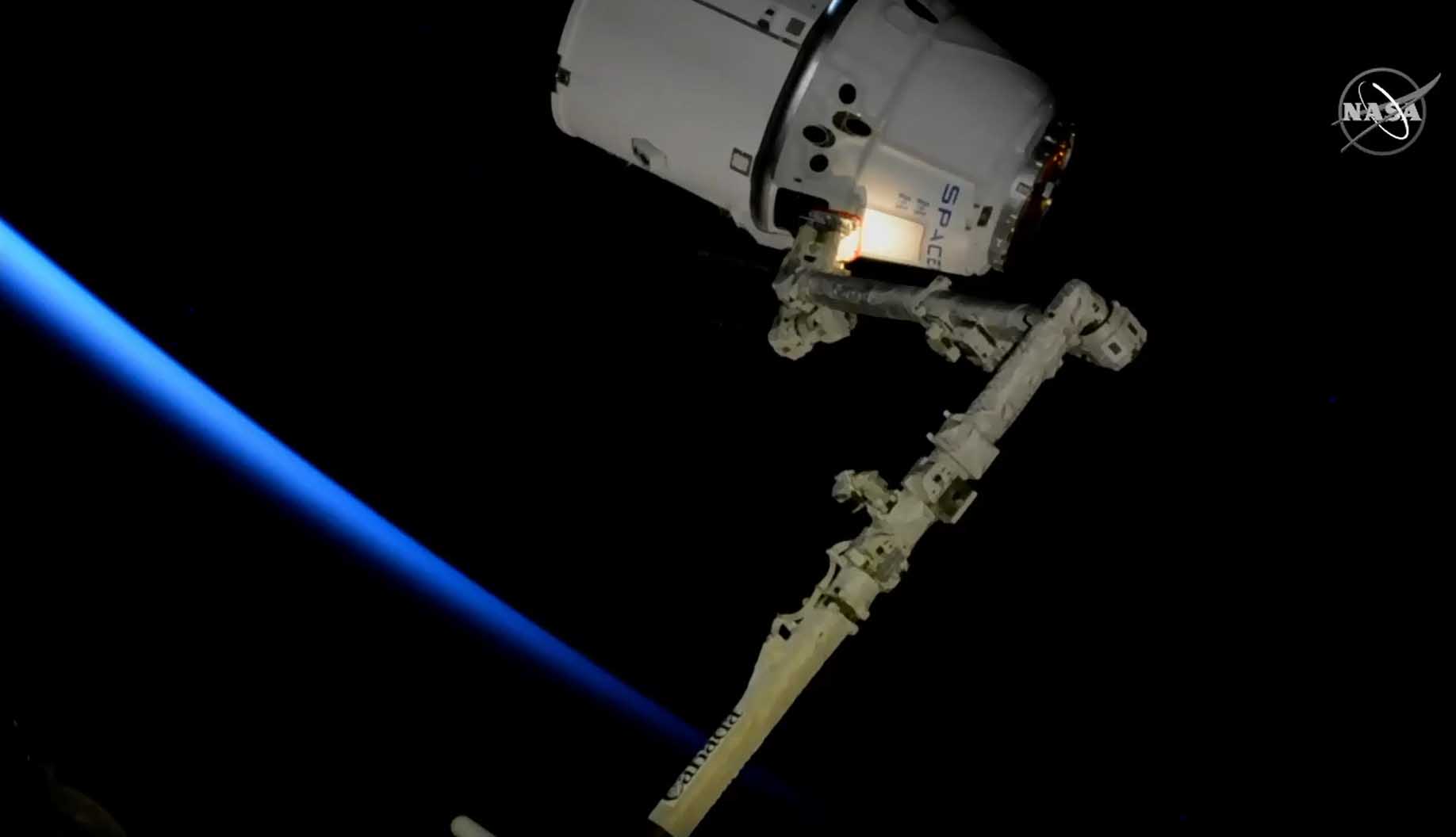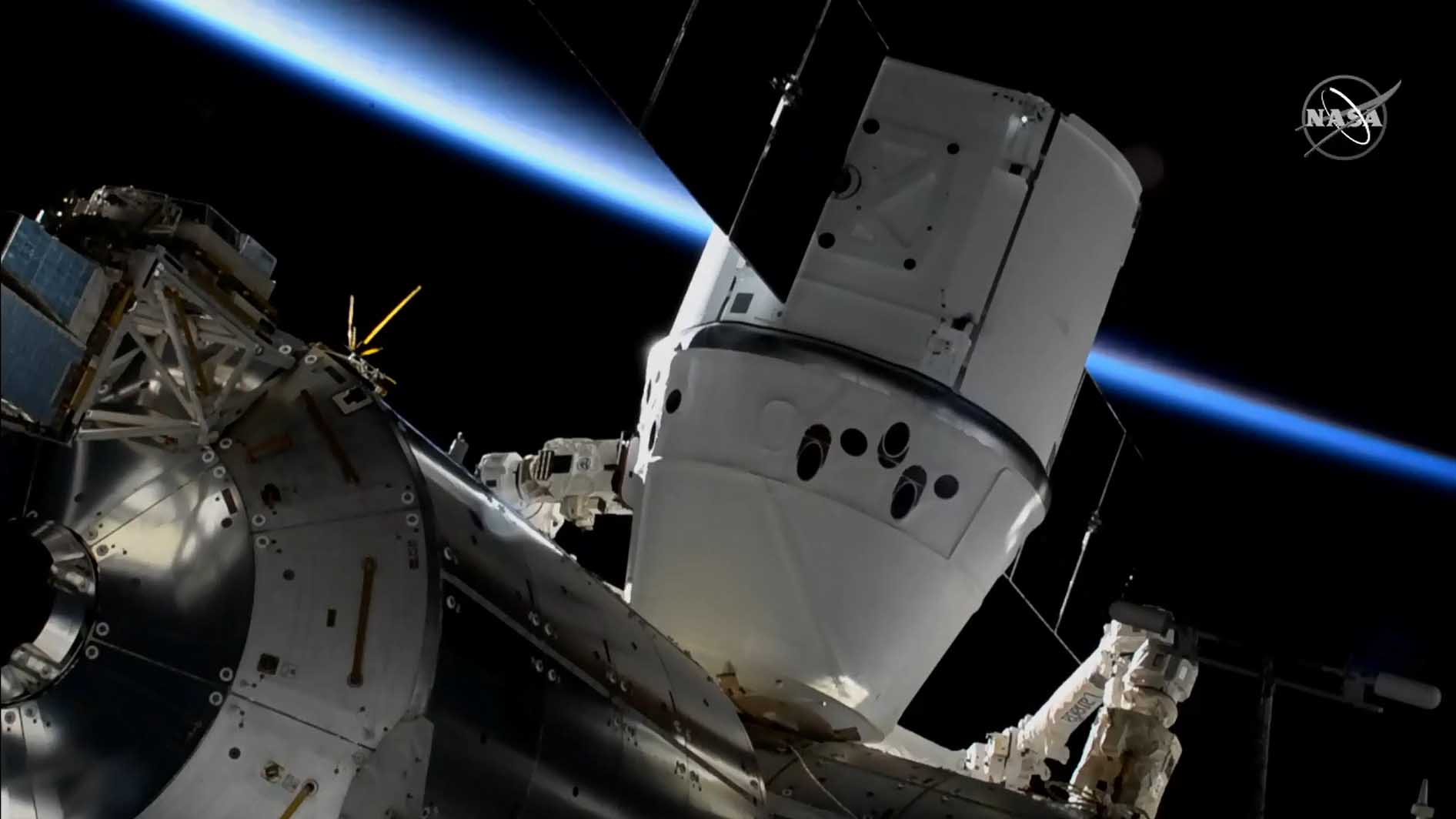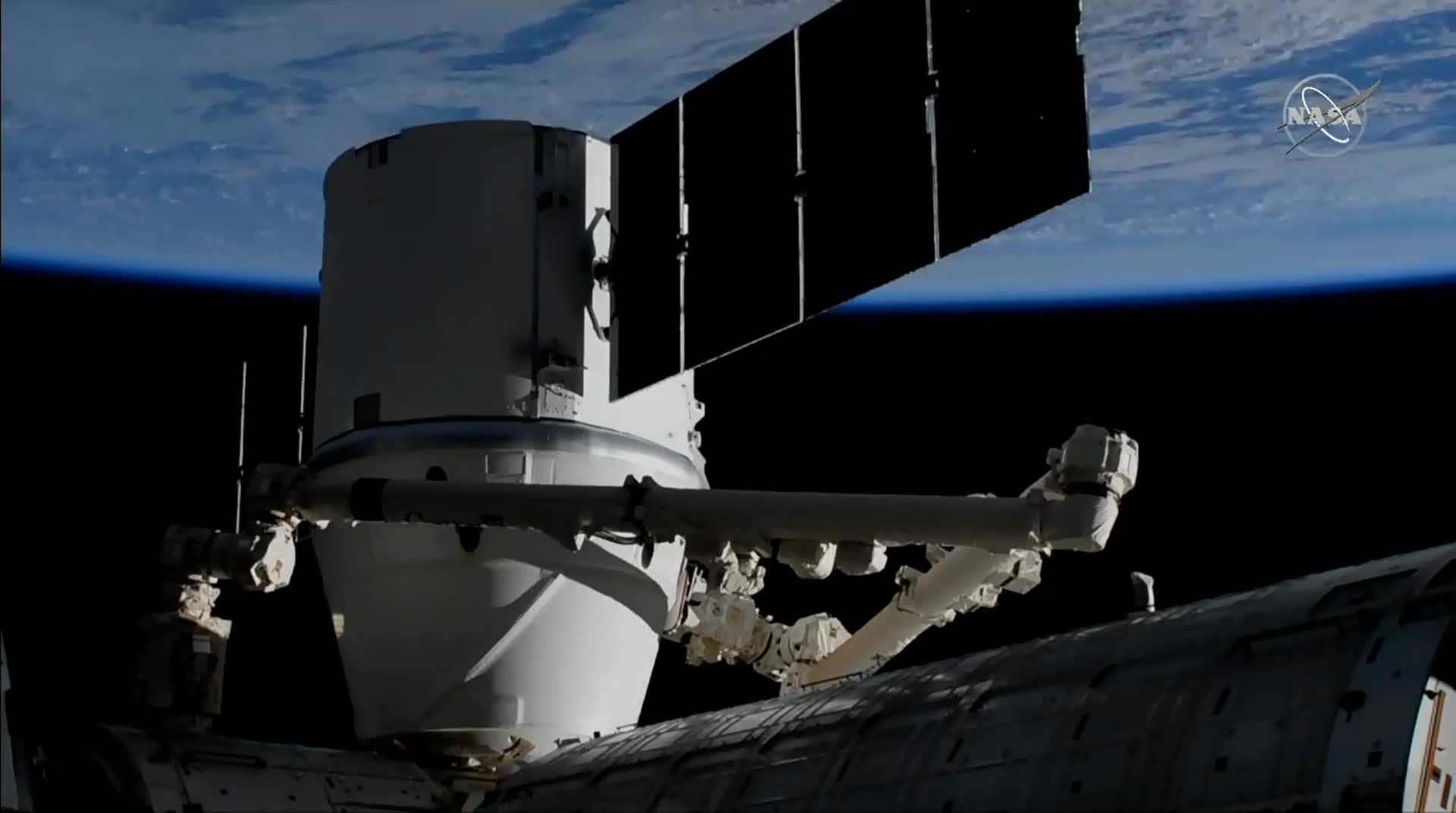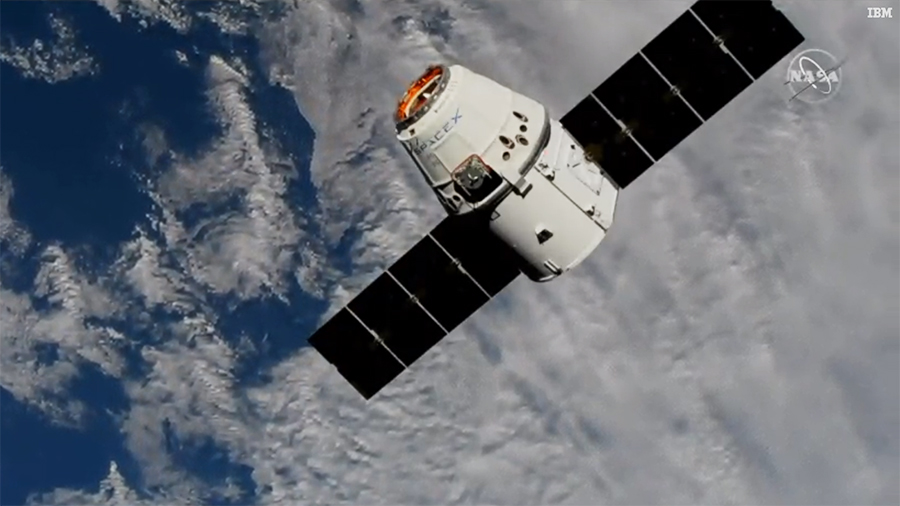SpaceX's robotic Dragon cargo capsule arrived at the International Space Station early this morning (March 9), delivering more than 4,300 lbs. (1,950 kilograms) of supplies to the orbiting lab.
NASA astronaut Jessica Meir used the station's huge Canadarm robotic arm to capture Dragon at 6:25 a.m. EDT (1025 GMT), while the two spacecraft were 262 miles (422 kilometers) above the Pacific Ocean near Vancouver, British Columbia, NASA officials said.
It was the last-ever arm grapple for a Dragon. The current mission — the 20th SpaceX has flown under a cargo deal with NASA — is the last for this first version of the SpaceX resupply vehicle. The new iteration will dock directly to the International Space Station (ISS), no arm required, just like SpaceX's astronaut-carrying Crew Dragon capsule.
Related: How SpaceX's Dragon space capsule works (infographic)
"The SpaceX 20 mission is a milestone for several reasons," Meir said this morning. "It is of course the 20th SpaceX cargo mission, but it is also the last SpaceX cargo vehicle captured by the Canadarm, as future vehicles will automatically dock to the space station. It is also the last cargo vehicle that will visit during our current crew's time on the space station."

The last SpaceX Dragon to be captured by a robotic arm on the International Space Station is seen just after capture on March 9, 2020. All future Dragons will be able to dock themselves at the station.

SpaceX's Dragon CRS-20 cargo ship was attached to the International Space Station's Harmony connecting node shortly after its capture.

This was the third trip to the space station by this particular SpaceX Dragon. It launched on a Falcon 9 rocket, also previously flown, on Friday, March 6.

The Dragon cargo capsule approached the International Space Station on March 9, 2020.
Dragon launched toward the station atop a SpaceX Falcon 9 rocket on Friday night (March 6), packed with science gear. Among that hardware is Bartolomeo, a facility created by the European Space Agency and aerospace company Airbus that will provide greater research opportunities on the ISS' exterior.
Dragon also toted up a variety of scientific experiments, including one called MVP Cell-03, which "examines whether microgravity increases the production of heart cells from human-induced pluripotent stem cells (hiPSCs)," NASA officials wrote in a statement. "The investigation induces stem cells to generate heart precursor cells and cultures those cells on the space station to analyze and compare with cultures grown on Earth."
Get the Space.com Newsletter
Breaking space news, the latest updates on rocket launches, skywatching events and more!
"We welcome SpaceX 20 and are eager to reveal its bounty of science and space station hardware and supplies," Meir said. "Congratulations to SpaceX and all of the ISS partner teams involved."
This morning's ISS arrival is the third for this particular Dragon, which also visited the orbiting lab in February 2017 and December 2018.
Three cargo missions is the design limit for the Dragon 1 capsule iteration. But the new Dragon 2 vehicle will be capable of flying to the station and back five times, SpaceX representatives have said. Such repeated reusability is key to SpaceX's quest to slash the cost of spaceflight, thereby making ambitious exploration feats such as Mars colonization economically feasible.
That reusability involves rockets, too. For example, SpaceX landed the first stage of the two-stage Falcon 9 about 8 minutes after liftoff on Friday night, notching the 50th such touchdown for the company during an orbital launch.
SpaceX holds one NASA deal for cargo transport to the ISS and another one for crew. The company flew an uncrewed demonstration mission to the orbiting lab in March 2019 using Crew Dragon, and the capsule is poised to launch two NASA astronauts on a test flight to the ISS soon, perhaps in early May. If that flight, known as Demo-2, goes well, contracted crewed flights would likely follow in short order.
The cargo Dragon will remain attached to the ISS for about a month, then come back down to Earth for an ocean splashdown.
- SpaceX's Crew Dragon Demo-1 test flight in pictures
- International Space Station: facts, history & tracking
- In photos: A behind-the-scenes look at SpaceX's Crew Dragon spaceship
Mike Wall is the author of "Out There" (Grand Central Publishing, 2018; illustrated by Karl Tate), a book about the search for alien life. Follow him on Twitter @michaeldwall. Follow us on Twitter @Spacedotcom or Facebook.
OFFER: Save at least 56% with our latest magazine deal!
All About Space magazine takes you on an awe-inspiring journey through our solar system and beyond, from the amazing technology and spacecraft that enables humanity to venture into orbit, to the complexities of space science.
Join our Space Forums to keep talking space on the latest missions, night sky and more! And if you have a news tip, correction or comment, let us know at: community@space.com.

Michael Wall is a Senior Space Writer with Space.com and joined the team in 2010. He primarily covers exoplanets, spaceflight and military space, but has been known to dabble in the space art beat. His book about the search for alien life, "Out There," was published on Nov. 13, 2018. Before becoming a science writer, Michael worked as a herpetologist and wildlife biologist. He has a Ph.D. in evolutionary biology from the University of Sydney, Australia, a bachelor's degree from the University of Arizona, and a graduate certificate in science writing from the University of California, Santa Cruz. To find out what his latest project is, you can follow Michael on Twitter.
-
JDClayton Saying "last to be caught by robot arm" isn't really accurate. I heard Elon say that the cargo berthing hatch (50" square) would still be used to load/unload cargo larger than will not fit through the docking port (31" round). As far as I know, to do that would still require the robotic arm to position the cargo hatch for berthing.Reply










